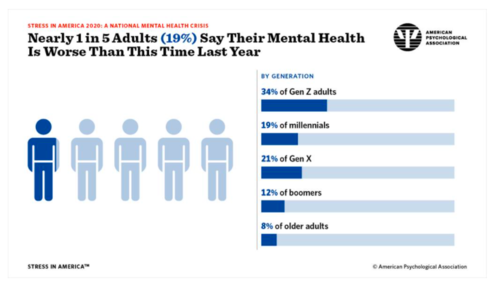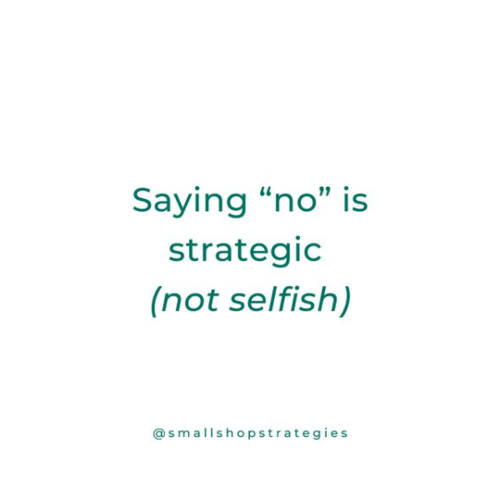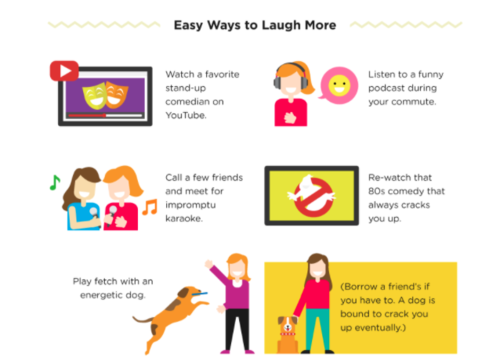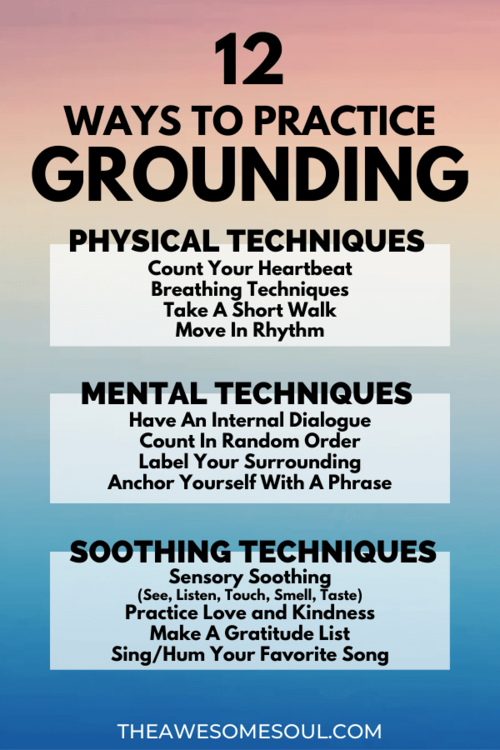What to do when you need to reset and recharge
Does this sound familiar?
First, you kick yourself for not doing enough yesterday (feeling big regrets for watching an hour of Netflix last night). Then you start going above and beyond for anyone and everyone (either to make up for that split second you weren’t 100% focused on your job—or because you’re scared you’re going to drop a ball).
Then, pretty much inevitably, you overextend yourself to the point of burnout. You’re beyond exhausted and thinking When will I ever catch a break?
In episode 14, we did a deep dive into burnout prevention (and I got REAL personal about my experience with burnout). As isolating and overwhelming as burnout can feel—the truth is—you’re not alone in this. In fact:
The burnout cycle is a tough one to break. Especially when you’re navigating deadlines and mental health and everything in between. If you’re in the fog of burnout, this is the episode for you.
Need a reset? Try one of these 7 tips today:
1. Reframe your perspective.
Here’s what I want you to do: Open your notes app on your phone or grab the nearest sheet of paper. Got it? Great. Now write down three things you are grateful for today. Your list could include your family, the pint of ice cream waiting for you after work, it could be ANYTHING. Just THREE short bullet points. Nothing too in-depth here.
Now, I want you to write the 3 things you accomplished today. Anything from:
Writing a tough email
Checking off your bookkeeping for the month
Even preparing tomorrow’s lunch ahead of time
See? Feeling a little lighter now? Not a waste of a day after all. Focus on what you’ve accomplished. Even small achievements will help you find self-worth and comfort in knowing you’re heading in the right direction. Give this mindset practice a go for the next week. (And make sure you reach out to me on Instagram and tell me how it goes!).
2. Go back to the basics
Burnout is often normalized in nonprofit culture, which makes it hard to prioritize taking care of yourself. If I’m not stressed, am I really doing enough? Doesn’t focusing on myself make me selfish? Heck-to-the-no. The old cliche is true: you have to fill your own oxygen tank before you fill others’. Your health is an absolute necessity; it’s time to go back to the basics. That means sleeping, eating, exercising, and drinking water. Start here.
Self-care isn’t all bubble baths and cute Insta-stories. It’s about nourishing your body so you can show up and stay healthy. Nothing cutesy about it. It takes slow and steady work (doesn’t everything?). So do what you need to do to take care of YOU today. And remember: every day is a process. Focus on one foot in front of the other.
3. Make cuts
Here’s an easy one. Take a look at that calendar of yours. What are the things that make you dread your day? What makes you cringe?
Is there anything you can change or reschedule?
Something you can hand off or delegate?
Push that meeting back a week. Hand off that grant proposal to your team member. Then, figure out what you can cut out altogether and DELETE IT. Taking control over your schedule will help you better focus on the tasks that fill you up and move your organization forward.
4. Set a LOWER bar
If your goal is to workout 20 minutes a day, stop right there. What’s the absolute BARE MINIMUM you can do instead? One minute of stretching? A 10-second plank? I’m not kidding. A little is better than nothing.
And that goes for running your nonprofit, too. What are those big expectations you have for yourself, and how can you set a bare minimum bar? Steal some of these ideas:
Social media content. Stop kicking yourself every time you go a day without posting. What’s the bare minimum that will help you feel accomplished? Can you aim for once or twice a week? (If you’re stuck, take the Content Planning workshop and get three months of social media content planned in advance).
Donor calls. Did donor calls slip your mind last month? Thinking about pushing it back another month (because you’re scared of the mile-long list of constituents?). Dial it back. Can you make ONE call this month? Maybe two?
Thank you letters. Whoops, Barbara never got her handwritten note last month. You meant to send letters every week but the whole time thing keeps passing by without your permission. Can you aim to send letters out once a month in a single batch? Can you focus on sending handwritten notes only for a certain level of donors?
Low bars aren’t lazy. They’re practical. Setting a lower bar means you’ll meet your expectations and stop spending so much time wishing you were doing more.
5 .Find laughter
Don’t roll your eyes at me. We all take ourselves a little too seriously sometimes, and laughter melts away some of that worry. What is one surefire way to make you smile?
Do you have a favorite comedian?
Favorite sitcom?
Love watching videos of pandas stumbling down slides?
Maybe take a break from that intense show you’re watching and watch an episode of Schitt’s Creek tonight. Maybe listen to your favorite comedy podcast while your little one takes a nap. It doesn’t have to be something big or life-changing. Even a minute of laughter can REALLY do the soul some good.
Source: Happify
6. Find calm
Next, figure out what brings you a sense of calm. (You need some PEACE and QUIET in that busy mind of yours). What could that look like?
Maybe you love going for a long walk at lunchtime.
Maybe it’s reading a chapter of your new book before bed.
Maybe it’s rolling out the yoga mat and doing a child’s pose for one minute.
Life is a whole bunch of little moments, right? So even a small moment of peace is something to celebrate and keep sacred. Try making a “Calm down” list, so the next time you’re at your limit, you’ll know where to turn.
Source: The Awesome Soul
7. Try the sandwich method
I hope, if you’re hungry, you’re making a sandwich at this VERY MOMENT. (Remember nourishment is a part of recharging so count it!). Anyway, I can’t wait to tell you about this concept I learned about recently.
There’s this book called Force of Habit by Tamsin Astor, and she’s got a method she calls the 3 S’s of habit-forming. The thing is: habits are REALLY hard to start. Like...REALLY HARD. And even your BEST intentions only get you so far.
Enter the sandwich method. (I think you’re going to love this). Here we go…
It goes:
Same Time
Same Place
SANDWICH
Amazing, right?
The author says: “When you add a new habit, sandwich it between two habits you consistently practice [one after another]. It's much more likely to stick.” As an example, do a few yoga stretches between brushing your teeth and brewing a fresh pot of coffee. Or, if you want to work on a new hobby, spend ten minutes between dinner and Netflix working on it.
I am OBSESSED with this idea (now I’m going to have to go and check out her book). Habits are SO hard to stick to, but the idea that you can pair a new habit with something you’re already doing… I just love it.
Be proud of yourself
But what about your to-do list? What about all that productivity talk?
I’m telling you: replace those feelings of guilt with feelings of accomplishment. I’m serious! Finding a way to reset and recharge isn’t easy; stepping away is the last thing you want to do when your list keeps growing. It’s probably the hardest part in the productivity cycle. But showing up for yourself IS being productive, too. Be PROUD. You’re doing this thing.






